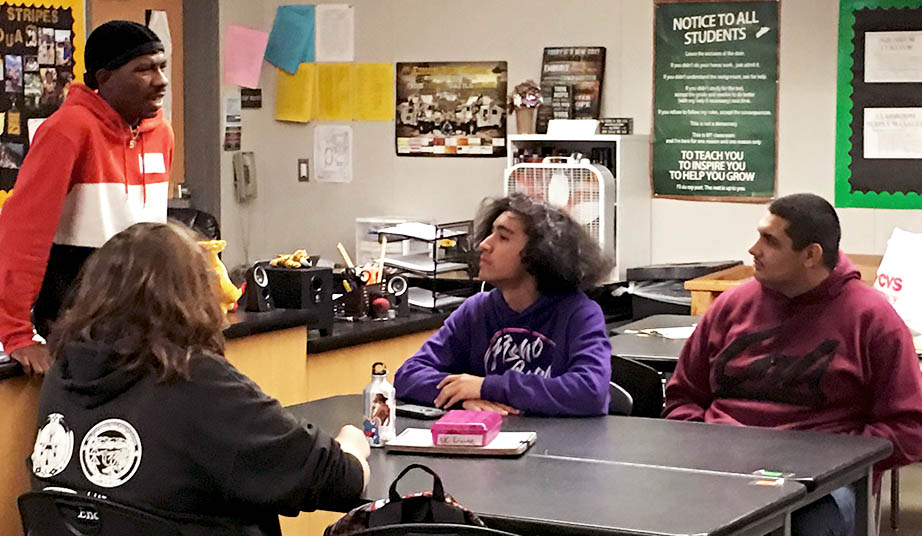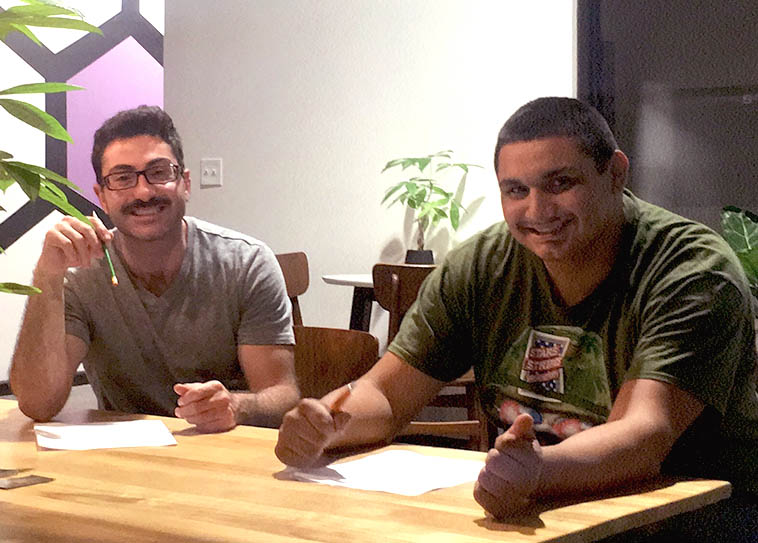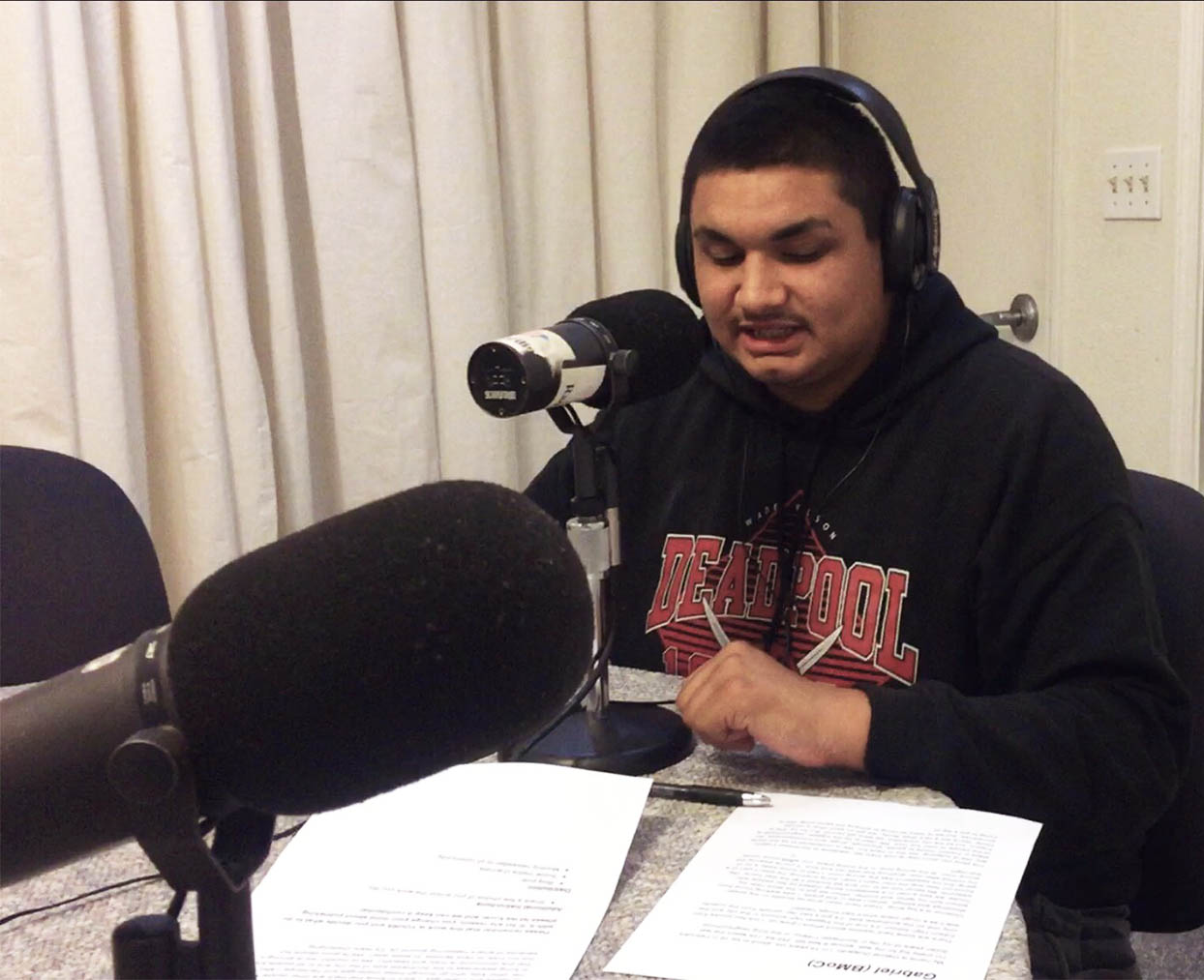
I’m 15 years old, about to be 16 in February. I’m pretty big for my age: almost 6 feet tall, 250 lbs. I’ve spent the last dozen years of my life in Southwest Fresno, in the King neighborhood. I’m outgoing, I love to do things, I’m extroverted, I have lots of friends. My nickname is “Teddy Bear” – my friends think I’m a big softy. I love helping people and working in my community. I love making connections. So being part of Boys & Men of Color (BMoC) just makes sense.
There are some hard realities about where I grew up. I live two blocks from Edison High School – it’s the only one on the southwest side of Fresno. It’s got a bad rap – people from the outside see it as a rough place where bad things happen.
At the other end of my community is G Street, which connects us to downtown Fresno. There is a huge homeless encampment there, and it is the first thing people see when they come from downtown into our neighborhood. There are so many different people who live there, and they’re not such a threat – the encampment is established, and the folks who live there have been there for awhile.
I’ve always been scared of ending up homeless. I grew up so close to the encampment. A couple of my friends and family members were homeless for a time. For this reason, I’ve always had a thing about drugs – if I ever try it, if anything happens, that’s where I’ll end up.

Violence is also a thing. There have been drive-by threats on my street – shootings and killings. When I was in first grade, I was walking home from school with my father and brother. When we got to the store near my house, we saw a man in a sweatshirt being chased by two people with weapons. My father told us to run and we booked it all the way home. We found out later that the man hadn’t been doing anything – he wasn’t part of a gang – but his sweatshirt was the wrong color. I had to throw away a lot of my clothes after that – anything that was red, blue, purple, or green. I love to wear blue. But I just can’t. If you’re wearing the wrong color, at the wrong time, in the wrong place, you won’t come home that night.
I’ve been told that if I don’t do right, I’ll end up in one of four places: in jail, on the streets, still in high school at 25 years old, or in the grave. And it’s happened: a young person was gunned down at night for wearing the wrong sweater. He was on his way to the NFL.
But a lot of what’s “wrong” with my community is a matter of perception – the narrative that the city has about us. As a Mexican-American, if I get caught anywhere near trouble, the police, the court system will blame me for it, even if I wasn’t doing anything. I’m realizing that there are certain ways I have to go to get back home, certain routes I have to take to avoid trouble. I get anxious when I see police or governmental figures, especially if they notice me. I’ve lived my entire life with this narrative. Every time I tell people that I’m from Southwest Fresno, they assume I’m scary, poor, tough.

The consequences for my actions – whether or not they are “wrong” – are very real. I don’t do bad things, I don’t take drugs, but my face is this brown color, and the color of my sweater matters. I have to be super aware of who I’m talking to, what I’m wearing, and where I am. One wrong decision can lead to an avalanche effect.
There is some truth to the stereotypes, but not nearly to the scale that people think. Anything that happens in Southwest Fresno – even average incidences, small fights – the media is all over it, blowing it out of proportion. There have been fights, gun scares in other parts of the city, but they don’t get the same kind of negative media attention that we do.
The story you don’t hear is how lively we are. We’re outgoing. We like to have fun. We’re considered to be the worst place in Fresno – home to the gangs, shootings, drugs, and homelessness. All of the people of color live here. We used to be the biggest neighborhood in Fresno, but as the city is expanding, we’ve been left behind. The city tries to shut us out, focusing its energy on other projects. But for us, this is home. We’re like a very large family – we get on each other’s nerves sometimes – but we’re really all trying to achieve the same thing. We’re trying to get a leg up.
We know that there’s hardship, so we live one day at a time and focus on the good things. Tomorrow is the biggest football game of the year – if we win, we go to championships. It will be the end of a great season. The game is first thing I wake up thinking about every day. It’s become my instinct to be aware, to be safe – but I continue living my life. I can’t have those things in the back of my head all the time.

This is why BMoC is working so hard to change the narrative. We participated in the Fresno Art Hop in November, and our goal was to let people know who we are. There were visuals – paintings and artistry. There was music, spoken word, oral storytelling, poetry, video, live performances. There are a lot of youth in the program, and they come from all over Fresno. So we invited people to come and learn about who we are, to come and meet some of us.
I love writing, so my piece was an oral storytelling. I want to change the narrative of what people think of me, so I wanted to tell a story about my life. I wanted to show out the struggles and challenges, I wanted to show that there are other people like me, other kids, who go through these challenges and hardships. I also wanted to bring awareness to the southwest side of the city and to let people know that this community isn’t lazy and violent. We’re hopeful, we’re striving to live our lives, to have families, to settle down. We’re good people but because of what’s happening around us, it’s really challenging.
